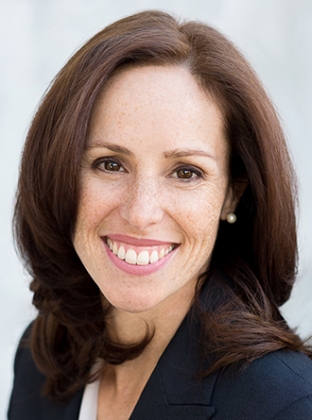In the News
News
Feb 27, 2018
Campaign Rally Murder: The Partisan in the Bathroom with the Walking Stick—The Case of the 2018 Mock Trial Competition
Feb 27, 2018
By Anna Pletcher

On two recent Saturdays, 206 students from nine high schools filled the Marin County Courthouse for the 30th annual Mock Trial Competition. By 8:00 a.m., the hallways buzzed with teenagers snacking on breakfast bars, practicing lines, and chatting nervously. Parents and coaches swarmed around, straightening ties, brushing hair, filling water bottles. Teams gathered in tight circles, cheered, and filed into their respective courtrooms to do battle.
The two-day competition was the culmination of months of preparation. At the beginning of the school year, the teams received the case file — 79 pages of rules, fact patterns, witness statements, exhibits, and case law. Students spent hours poring over the materials, familiarizing themselves with every detail. Coaches worked with the students over the next several months to develop strategies, hone questions, prepare objections.
The facts of mock trial cases are well-balanced, designed to present the prosecution and the defense with equal opportunities. This year’s case, People v. Davidson, was no exception. Political rivals Davidson and Thompson attended a rally in which a controversial anti-immigrant radio show host was scheduled to speak. The crowd turned violent. Thompson was punched in the nose by an unknown assailant and headed toward the bathroom to clean up. Davidson followed. Shortly thereafter, Thompson was found beaten to death, with Davidson’s bloody walking stick on the ground nearby. But Davidson had an alibi — she was at a local tech store buying batteries for her bullhorn. And dueling forensic experts disagreed about the likely murder weapon and the time of death.
Mock trial cases always include a disputed legal matter to be resolved pretrial. This year’s pretrial motion focused on a timely issue: whether law enforcement’s collection of the defendant’s GPS location data from a car company violated the Fourth Amendment.
The trial itself proceeds much like a real trial, with a few modifications. The parties argue the pretrial motion first. The judge rules on the motion, then the trial follows. Each team has a total of 34 minutes to complete their entire case: opening statement, direct and cross examinations, and closing argument. Objections, based on modified rules of evidence, are expected and encouraged.
Each school fields a prosecution team and a defense team. The teams consist of four witnesses, three or four trial attorneys, and one attorney who argues the pretrial motion. The bailiff and timekeepers also play important roles, swearing in witnesses and ensuring that the teams adhere to the strict time limits.
Three volunteer attorney scorers mark students individually on a scale of 1 to 10, based on their knowledge of the material, rules of evidence, poise, eloquence, and professionalism. The scorers also render a verdict, which may or may not correspond to the team with the highest score. At the end of the day, however, it is the point total that matters.
This year, Marin Academy and Tamalpais High School faced off in the finals. Tam came out on top, continuing its impressive 23-year winning streak.
Organizing the county-wide mock trial competition is no small feat. The Marin County Office of Education spearheads the effort. Lisa Schwartz serves as the Director and Jonathan Lucha and Luz Lopez are the primary coordinators. Planning begins the summer before school starts. In September, they meet with teachers and attorney coaches and begin recruiting attorney scorers and judges. The work intensifies in December and January with complex scheduling and continued volunteer recruiting.
“The most challenging part [of our job] is the recruitment of attorneys and judges. Our budget for this event is small, therefore, using staff time can be difficult,” said Lopez.
Volunteers make the event possible. Eight Judges volunteered to participate in this year’s competition: Roy O. Chernus, James T. Chou, Stephen P. Freccero, Paul M. Haakenson, Beth S. Jordan, Shelia Shah Lichtblau, Mark A. Talamantes and Beverly K. Wood. Six employees from the Marin County Office of Education pitched in to help the flow of people and paperwork during the competition days. And thirty six local attorneys volunteered their time as scorers and coaches.
At the end of the day, this tremendous effort is well worth it. For Lopez, the most rewarding part is “when students get to run through the trial on the competition days in an actual courtroom with the presiding judge in front of jurors.”
Lily Datnow, a sophomore at San Rafael High School and prosecution pretrial award winner, agreed. She said “getting to take part in the actual system where someday as adults we may be working” is the best part.
For parents, watching their children rise to the challenge is priceless. One San Rafael High School parent said, “My son was such a quiet boy. Through mock trial, he has learned to speak articulately in public, put his thoughts in order, and pay attention to details. He has learned to ask for help when he needs it and to communicate with adults. He is comfortable in his own skin.”
It would be hard to ask for a more positive result from any high school activity. The experience is rewarding for all involved, including the volunteers. If you’d like to participate in next year’s trial, contact Jonathon Luca or Luz Lopez.
Anna Pletcher is a former federal prosecutor and Assistant Chief of the United States Department of Justice, Antitrust Division. She currently teaches at Berkeley Law and serves on the Board of the Marin County Bar Association and as the Treasurer for the Federal Bar Association, Criminal Section. Ms. Pletcher is a candidate for Marin County District Attorney in the 2018 election. She was also an attorney coach for this year’s San Rafael High Mock Trial team. [Editor’s note: the MCBA does not endorse candidates and its publication of Ms. Pletcher’s article does not constitute an endorsement.]












